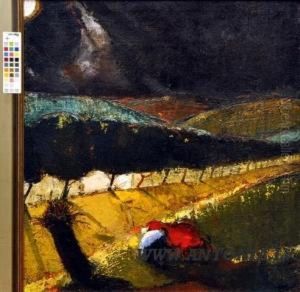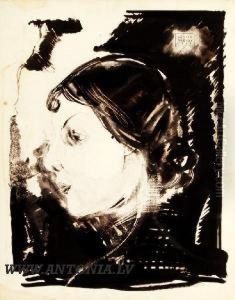Karlis Padegs Paintings
Karlis Padegs was an influential Latvian artist known for his unique and somewhat eccentric artistic style that combined elements of surrealism, expressionism, and symbolism. Born on October 8, 1911, in Riga, which was then part of the Russian Empire and is now the capital of Latvia, Padegs grew up during a period of significant political and social change, which had a profound impact on his work.
Padegs' artistic career was brief yet intense, as it lasted just about a decade before his untimely death at the age of 28. Despite his short life, he is considered one of the most original and controversial figures in 20th-century Latvian art. His small but potent body of work is characterized by its dramatic intensity, eroticism, and often grotesque imagery, reflecting the turbulent era in which he lived, including the aftermath of World War I, the interwar period, and the beginning of World War II.
He began his formal art education at the Latvian Academy of Art in Riga but was expelled in 1934 for his nonconformist behavior. Nevertheless, Padegs continued to develop his art independently, drawing inspiration from various European avant-garde movements as well as Latvian folklore and classical art. His works often depicted fantastical scenes, blending dreamlike figures with satirical and sometimes macabre elements. This idiosyncratic approach set him apart from his contemporaries and cemented his legacy as a pioneer of modern Latvian art.
Unfortunately, Karlis Padegs' career was cut short by his premature death on April 27, 1940, due to complications from tuberculosis. Although his life was short, his influence on the Latvian art scene was significant, and his works continue to be celebrated for their originality and expressive power. Today, his art is held in high regard, and he is considered a key figure in Latvia's cultural heritage, with his works displayed in the Latvian National Museum of Art and other institutions around the world.

